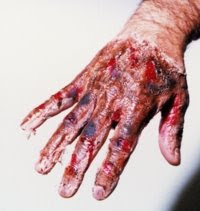This is a collection of evidence that was used to prosecute her and her family after the incident.
Case: 100800A
Tribunal: Laoguna
Judge: J. Filarine
To break free of the oppressive stranglehold that the District’s plague doctors still maintained, Shoko’s father repurposed out-of-date deep sea diving equipment to protect them and several other families as they broke through the District barriers by way of Laoguna’s ancient catacombs. When they were captured, Shoko’s journal was taken as evidence, as she had unwittingly included damning sketches, conspirator names, and other details about her family’s plans.
The journal also provides proof of the plague doctors’ psychological control over their District’s denizens via nightmare manipulation and pharmaceutical therapies, as noted by the administrating officer.
The catacomb attempt failed on Sept 2nd, 1930; 13 died and 8 more, including Shoko’s mother and father, were imprisoned. After a long trial, the case concluded in February of 1935, with the public execution of her parents. Due to her age, Shoko was allowed to avoid imprisonment in exchange for indentured servitude.
Collaborators
Francesca Marie Smith
Joseph A Unger
Malore LumardaRi
10 pages and 4 other evidence in the zip





























